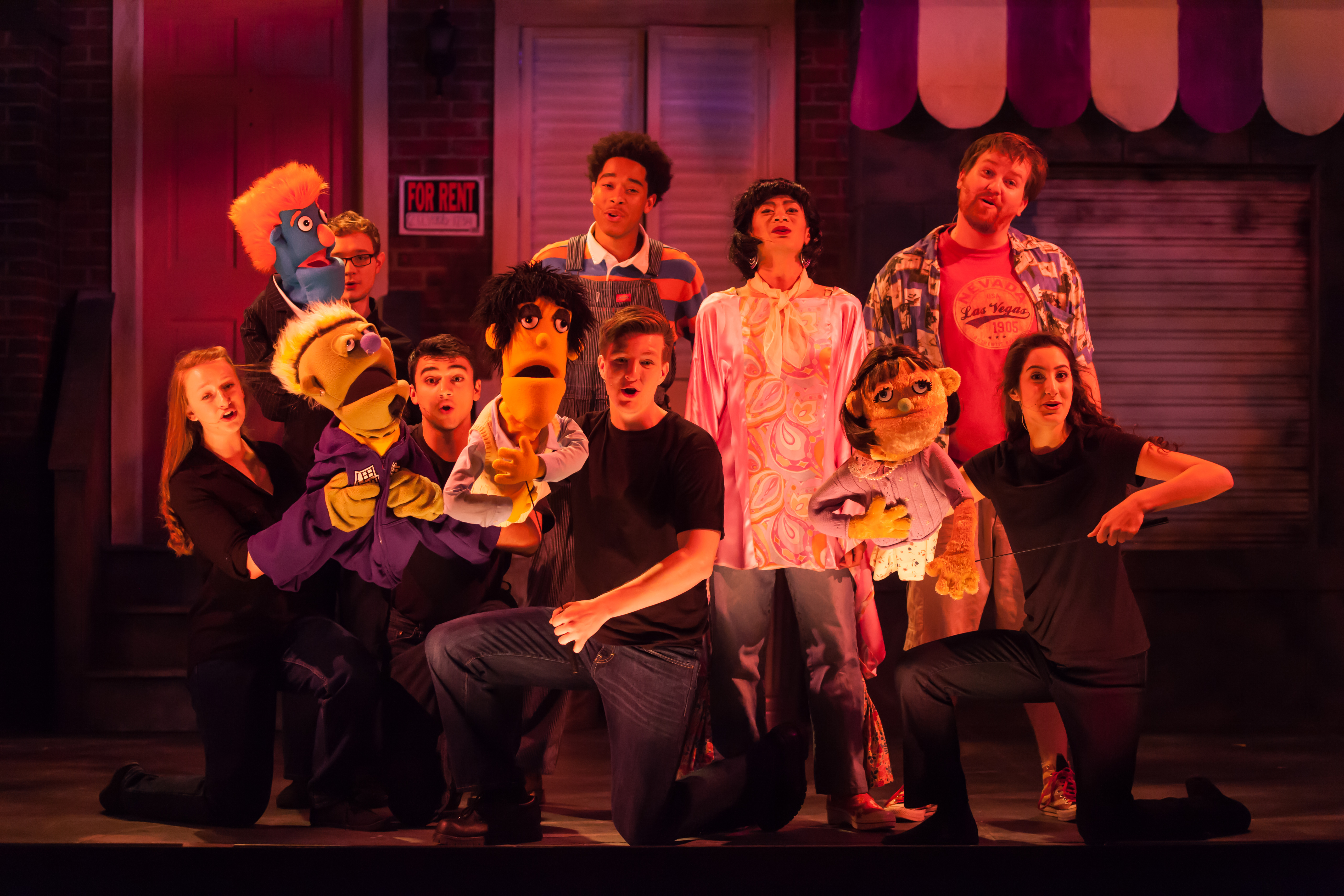Bring the Avenue Q puppets to life
3 min read
University Relations
By ASHLEY CHUNG
While “Avenue Q” has proven itself a formidable task, professors and students alike have put in hundreds of hours in order to make it exceptional. Their hard work has definitely made the show a worthwhile evening out full of laughs and perhaps a few lessons too.
Known as the Sesame Street for grown-ups, “Avenue Q” combines puppets with the dark humor of an uncertain life after college and sunny musical numbers like “What Do You Do With a B.A. in English?” and “It Sucks to Be Me.”
For those that have already seen the show, the amount of work that went into production is clearly evident. The show has nine puppet characters representing monsters and people alike and uses 24 distinct puppets. The main character, a puppet named Princeton, has five separate puppets alone for varying scenes and costumes.
This show has been in planning for much longer than usual due to the unique demands it requires. Kevin McCluskey, associate professor of theatre, has been in charge of the production of the puppets used in the show for the past three semesters. While concept and design started in the fall 2014 semester last year, McCluskey and students alike began working together at the beginning of the spring 2015 semester.
Students in McCluskey’s costume lab course and theatre seminar course have been working together and learning exactly what goes into the puppet making process. The dye lab, located on campus in duPont Hall, has been temporarily transformed into a puppet workshop, where all the puppets are created from scratch.
Actors that play the roles of these puppets immediately went into an intensive week-long puppet boot camp where they learned how to operate the puppets, which require dexterity and grace from the student manipulator. Following that they completed vocal rehearsals, and from there they started blocking the show.
Interestingly, puppets are operated one of three ways. Two puppeteers operate live-arm puppets, like characters Trekkie Monster and Nicky. The main puppeteer that voices the character operates the mouth and left arm, while a second puppeteer operates the right arm.
One-rod puppets are puppets that have their right arm sewn to the body, while their left arm is animated through a connected rod to emote. The last type of puppet is a two-rod puppet which has both arms connected to separate rods, like characters Lucy, the Bad Idea Bears, and Rod.
The puppets themselves were not the only part of puppet production. Much like character costumes, the puppets needed to have costumes designed too, because as Marilyn Wojdak, who was in charge of creating costumes for the show, said, “You can’t buy patterns for puppets.” Wojdak, led both student employees and theatre practicum students in bringing her patterns to life and designed the puppets’ costumes.
Aside from the 24 costumes needed for puppets, Wojdak also created some of the actors’ costumes, such as a wedding dress for one of the actors.
Visiting associate professor Niffer Pflager, who took on the position with zeal, designed the two-level set. She was also in charge of the set design for last year’s shows “Doubt” and “Lady Windermere’s Fan.”
The whole set was built in-house with the direction of UMW’s professors Pflager, Julie Hodge, and scene shop foreman, Kenny Horning. Other than these professionals, students from the technical production class, theatre practicum students, or student employees created the intricate sets.


